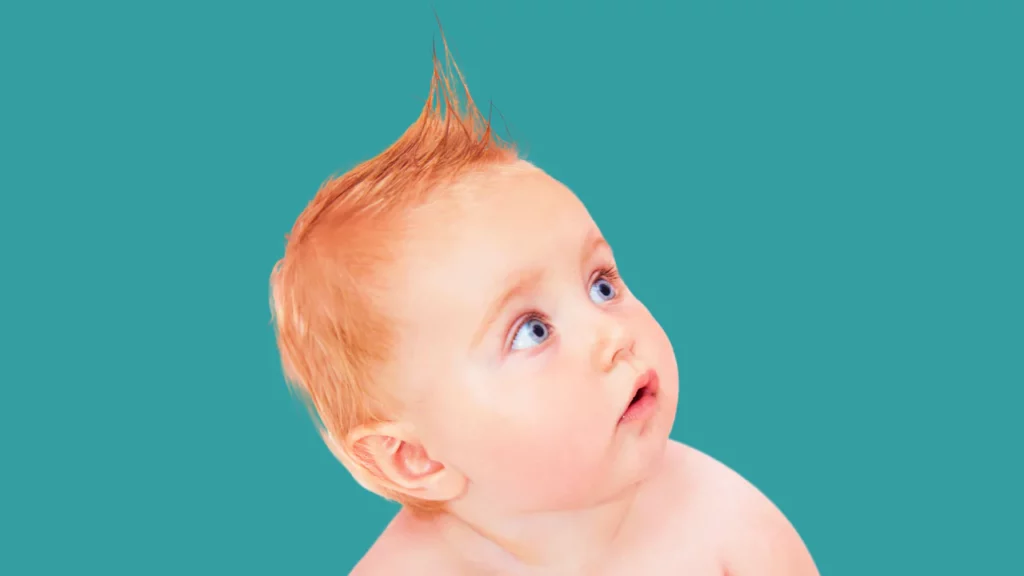Who doesn’t adore dimples? Those cute little indentations that appear when someone smiles are just… chef’s kiss. So, you’re probably wondering, “Will my baby inherit my or their other parent’s dimples?” Well, you’re in luck! We’ve created this nifty Baby Dimple Calculator that lets you play around with the possibilities based on your family’s dimple history.
With our Baby Dimple Calculator, you can enter information about the parents’ and grandparents’ facial features to get a sneak peek at whether your baby might have dimples.
Child’s Dimple Possibility Predictor
Select Dimple Presence for Parents and Grandparents (if known)
Try Other Genetic Calculators:
How This Calculator Works
Our Baby Dimple estimator provides a glimpse into the genetic chances of your baby inheriting dimples.
It leverages the principles of genetics in a user-friendly format, considering the dimple trait’s inheritance patterns.
Understanding Dimple
Dimples are actually the result of a tiny bit of muscle deformation (though we don’t think of them in that way). Yep, you read that right. It’s all about the muscles in your face, specifically one called the zygomaticus major.
For most of us, this muscle stretches from our cheekbones down to the corner of our mouth. When we smile, it pulls up the corners of our mouths.
But, in some people, there’s a bit of a split or a difference in the structure of this muscle. Instead of one smooth, long muscle, there might be a divide in it.
When they smile, this little “abnormality” creates a pull on the skin, leading to the charming indent we call a dimple.
Are Dimples Permanent?
Some of us have dimples that are visible all the time, while others only show when they’re smiling big.
And then there are those whose dimples might become less noticeable as they grow up and their face shape changes.
Dimples are more obvious while smiling because the zygomaticus major muscle is in charge of controlling your smile.
Genetic Gifts
Dimples are often a genetic trait, passed down from parents to their children. If one or both parents have dimples, there’s a chance their kids might have them too.
But, as with all things genetics, it’s a bit of a roll of the dice. There are plenty of people with dimples whose parents are dimple-free and vice versa.
Dominant vs. Recessive Traits
In the context of dimples, the concept of dominant and recessive genes is key. Dimples are typically seen as a dominant trait. Thus, a child only needs to inherit the gene from one parent to potentially have dimples.
This means if one parent has dimples, there’s a higher chance the child will also have them.
However, the presence of dimples is not guaranteed by genetics alone, as environmental and other factors can influence this trait.
Polygenic Inheritance
Like hair color or eye color, the presence of dimples can also exemplify polygenic inheritance, where several genes may influence the trait.
This complexity adds a layer of unpredictability to predicting whether a child will have dimples.
This is also the reason while dimples may skip generations or can be less prominent or more obvious depending on various genetic factors.
Beyond Simple Genetics
While genetics provides a framework, the final expression of dimples can be influenced by various factors, including muscular structure and fat distribution in the face.
Additionally, dimples may become less pronounced or disappear as a child grows and their facial features change.
Predicting Dimples with Our Calculator
Our calculator uses available genetic information from parents and grandparents to estimate the likelihood of a baby inheriting dimples.
By considering the family history of dimples, we can offer an educated guess about your baby’s chances of having this charming feature.
Our Dimple Predictor is a fun tool that combines genetic science with a touch of anticipation. While it’s based on genetic principles, the inheritable nature of dimples and the influence of multiple genes mean that predictions come with a degree of uncertainty.
Frequently Asked Questions
Can two parents without dimples have a child with dimples?
It’s less likely but not impossible. Hidden genes can sometimes express themselves in the child due to the complex nature of genetics.
Are dimples rare?
Dimples are relatively common, but their occurrence and the degree to which they are pronounced can vary widely across different populations or even within families.
Can a child’s dimples become more or less pronounced over time?
Yes, as children grow and their facial structure changes, dimples can become more pronounced or less noticeable.
How accurate are dimple predictor?
Like all genetic predictors, our dimple calculator provides estimates based on genetic likelihoods. The unpredictability of genetic expression means there’s always room for surprises.

Dr. Sumeet is a seasoned geneticist turned wellness educator and successful financial blogger. GenesWellness.com, leverages his rich academic background and passion for sharing knowledge online to demystify the role of genetics in wellness. His work is globally published and he is quoted on top health platforms like Medical News Today, Healthline, MDLinx, Verywell Mind, NCOA, and more. Using his unique mix of genetics expertise and digital fluency, Dr. Sumeet inspires readers toward healthier, more informed lifestyles.




